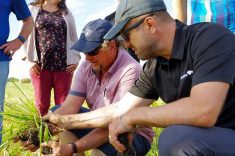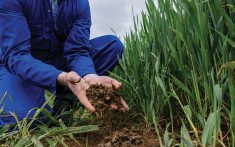The carbon cycle isn’t just vertical — CO2 moving up and down between soil, plants and the atmosphere.
New Michigan State University research published in the current issue of Geophysical Research Letters, shows water moves massive amounts of carbon laterally through ecosystems — especially during floods. These findings — which analyzed more than 1,000 watersheds — have implications for climate change and water quality.
Carbon in the environment, specifically dissolved organic carbon or DOC, is a master variable that influences many of our planet’s fundamental processes, such as water chemistry, greenhouse gas emissions and pollutant transport across land and water, said Jay Zarnetske, MSU earth and environmental scientist and the study’s lead author.
Read Also

Unclear food labels hinder Canada’s ‘buy local’ surge
“Maple-washing” on Canadian food packaging makes label claims hard to keep straight and hurts both farmers and consumers trying to buy Canadian, economist says.
“When water flows through ecosystems, it picks up organic carbon from plants and soils, and in many cases, water determines whether the ecosystem is a net carbon source or sink,” he said. “The massive amount of carbon that leaks out of ecosystems as DOC is about as big as the net amount of carbon taken up from the atmosphere each year.”
DOC in rivers is like making tea, Zarnetske added.
“You start with relatively clear water falling as precipitation, and then the organic carbon in the landscape gets leached into the water,” he said.
Zarnetske’s new work suggests a better way to account for the carbon leaving ecosystems by including data from flood events, which are typically not studied closely due to logistical and safety concerns.
What surprised the team of scientists is that floods readily flush carbon from diverse landscapes.















